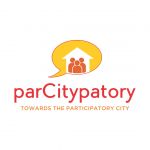In October 2016, world leaders, mayors, urban planners and architects gathered to discuss the future 20 years of cities. The result was the New Urban Agenda: A shared vision for a better, more sustainable urban future. Until the Habitat IV conference in 2036, this document will be the guiding framework for urban development of all UN member states.
The New Urban Agenda also works as an accelerator for the Sustainable Development Goals (SDGs). In particular, it intends to facilitate the implementation of SDG 11, “Make cities and human settlements inclusive, safe, resilient and sustainable”. So, what has happened in the five years since the adoption of the New Urban Agenda?
Five years later, it is very difficult to say what exactly has been achieved. Despite attempts to quantify successes to say what has actually been achieved, we do not have enough data on city or national level to give definitive answers. Therefore, we cannot make statements such as “Between 2015 and 2020, cities have increased their green space by 1.5%”.
What could future cities look like?
While there are many open questions and not too many answers surrounding the New Urban Agenda, we recently had a glimpse into what the city of the future could look like. Despite its many devastating effects, the COVID-19 pandemic showed us the strengths and weaknesses of our city. Citizens are suddenly much more aware of what makes a city liveable, and concepts such as car-free cities and 15-minute-cities have risen in popularity.
The pandemic has shown us which cities are strong and resilient, and which cities need to work on the liveability, their inclusiveness and their transport systems. With COP26 coming up soon, climate change and its effects on cities is another burning topic.
In order to go forward, we have to learn from the success of cities. Shining examples such as Copenhagen or Amsterdam are inspiring for other European cities, but we need a much larger database to understand how to achieve the goals of the New Urban Agenda.
The New Urban Agenda will continue to be an important point of reference. Similar to the SDGs, countries and cities need to find a way to implement its directives on a local level. This could take the following shapes:
- Integrating the targets of SDG11 in urban rules and regulations, for example in the shape of an Agenda 2030
- Focusing on an adequate provision of common goods such as streets and open spaces, as well as an efficient and just pattern of land distribution
- Improving municipal finance with more funds available to cities and boroughs and with a focus on local fiscal systems redistributing parts of the urban value generated in the city
- Carefully considering of national urban policies at the local level and vice versa
- Sourcing reliable, transparent data that can be disaggregated to evaluate progress
Who is going to implement the New Urban Agenda?
Local politicians and mayors in particular are the key guardians of SDG 11 as suggested in the New Urban Agenda. At the same time, civil society has an important role to play: By holding politicians accountable, claiming the Right to the City that the New Urban Agenda promises, implementing sustainable actions and learning from other cities, everyone can all contribute towards the implementation of the New Urban Agenda and SDG 11. Digital tools and social media are particularly helpful in creating accountability.
With just 9 years left to meet the ambitious targets of SDG 11, and 15 years left until Habitat IV, we have to start measuring progress in urban development and taking decisive action, which will look different for each city. Only by learning from failures, successes and examples of other cities will it be possible to localise SDG 11, find answers for urban development challenges and ultimately create better cities for everyone that meet the requirements of the New Urban Agenda.
For a look back at HABITAT III, use the tag HABITAT III or read more here:
Header Copyright: Tokyo City Panorama – Odaiba to Shibuya by Trevor Dobson via flickr, CC BY-NC-ND 2.0











